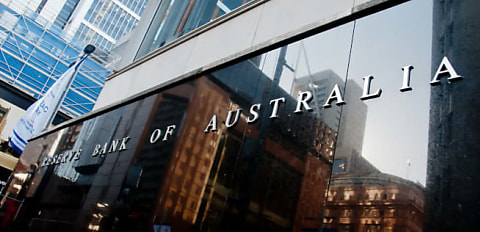The Reserve Bank of Australia (RBA) has decided to hold the official cash rate at 4.1 per cent.
This is now the second time the RBA paused the cash rate since it began hiking rates in May 2022, with the previous pause occurring in April of this year.
RBA governor Philip Lowe said in a statement following the decision: “The higher interest rates are working to establish a more sustainable balance between supply and demand in the economy and will continue to do so.
“In light of this and the uncertainty surrounding the economic outlook, the board decided to hold interest rates steady this month. This will provide some time to assess the impact of the increase in interest rates to date and the economic outlook.
“Some further tightening of monetary policy may be required to ensure that inflation returns to target in a reasonable time frame, but that will depend upon how the economy and inflation evolve.
“In making its decisions, the board will continue to pay close attention to developments in the global economy, trends in household spending, and the forecasts for inflation and the labour market.”
PropTrack senior economist Paul Ryan said while the cash rate was held steady today (4 July), the RBA signalled that “more tightening may be needed to rein in inflation”, with many expecting a 13th hike in August.
“The RBA judged that recent data on the labour market and inflation was in line with its expectations and opted to wait for additional data on inflationary pressures and productivity growth, in particular,” Mr Ryan said.
“More tightening is expected to be needed to bring inflation back to the RBA’s target, but rates are close to their peak, which is good news for the housing market.”
Mr Ryan further stated the housing market has shown “remarkable resilience” to sharply higher interest rates.
“Despite rates now at levels not seen since 2012, home prices increased further in June and are up 2.3 per cent over 2023 so far. Offsetting higher mortgage rates, strong buyer demand has been focused on a slower flow of new property listings and led to price increases,” Mr Ryan said.
However, he noted that higher rates are still a risk to the housing market, as eroded borrowing capacities and weaker economic conditions may lead to price falls, as seen in 2022.
CreditorWatch chief economist Anneke Thompson said the data released in June was not definitive enough to warrant a further cash rate hike.
“We are now nearing, if not at, the point in the monetary policy tightening cycle where further rises to the cash rate will have limited further effect,” she said.
“Households with a home loan have already endured the fastest and steepest rise to the cash rate in history, with most of these people unable to increase income enough to offset their higher interest repayments.”
Ms Thompson added that it’s highly likely that households with a home loan have “already pulled back significantly on their discretionary spending” as savings rates are now below pre-COVID-19 levels and COVID-19-era savings have already been exhausted by many.
“The RBA will now be hoping businesses slow their hiring intentions, taking some pressure off wages and reducing inflation in labour-intensive parts of the economy,” she said.
CoreLogic research director Tim Lawless said the currently, high interest rates and potential August hike “could weigh further on consumer sentiment”.
“Historically consumer sentiment and housing market sales have been closely correlated,” Mr Lawless said.
“Housing activity could be further impacted if credit becomes less available.
“The combination of high cost-of-living pressures, negative real income growth, and the high cost of debt have made it hard for borrowers to obtain credit approval, especially with lenders less willing to lend on high debt-to-income ratios, high loan-to-income ratios, or on smaller deposits.”
ANZ head of Australian economics Adam Boyton said the major bank is "reluctant" to back away from its call of a 4.6 per cent just yet.
"When and whether we get to that level is a little more uncertain in the wake of today’s pause.
"We suspect that the coming forecast update from the RBA staff will likely tip the balance in favour of an August rate hike. The timing of a follow-up move is uncertain, but we’d favour September or October," Mr Boyton said.
What was foreseen before the pause?
The Commonwealth Bank of Australia (CBA) stood as an outlier among the major banks, forecasting a pause at 4.1 per cent based on the latest inflation figures, while ANZ, NAB, and Westpac still expected a hike despite the drop in inflation.
Additionally, the ASX’s RBA Rate Indicator also suggests the market expects a hold in the cash rate in July.
On 3 July, the RBA Rate Indicator (based on the market-determined prices in the ASX 30 Day Interbank Cash Rate Futures) showed the market had priced in an 84 per cent chance of “no change” and just a 16 per cent chance of an increase to 4.35 per cent.
Speaking to Mortgage Business, AMP Bank economist Diana Mousina stated that the decision would “likely be a close call”, however, the bank ultimately believed that the RBA would increase the cash rate again by 0.25 per cent.
Ms Mousina noted the RBA has become “more concerned about the inflation outlook in Australia after the minimum wage decision”.
[RELATED: Owner-occupier refinancing sets new record]

